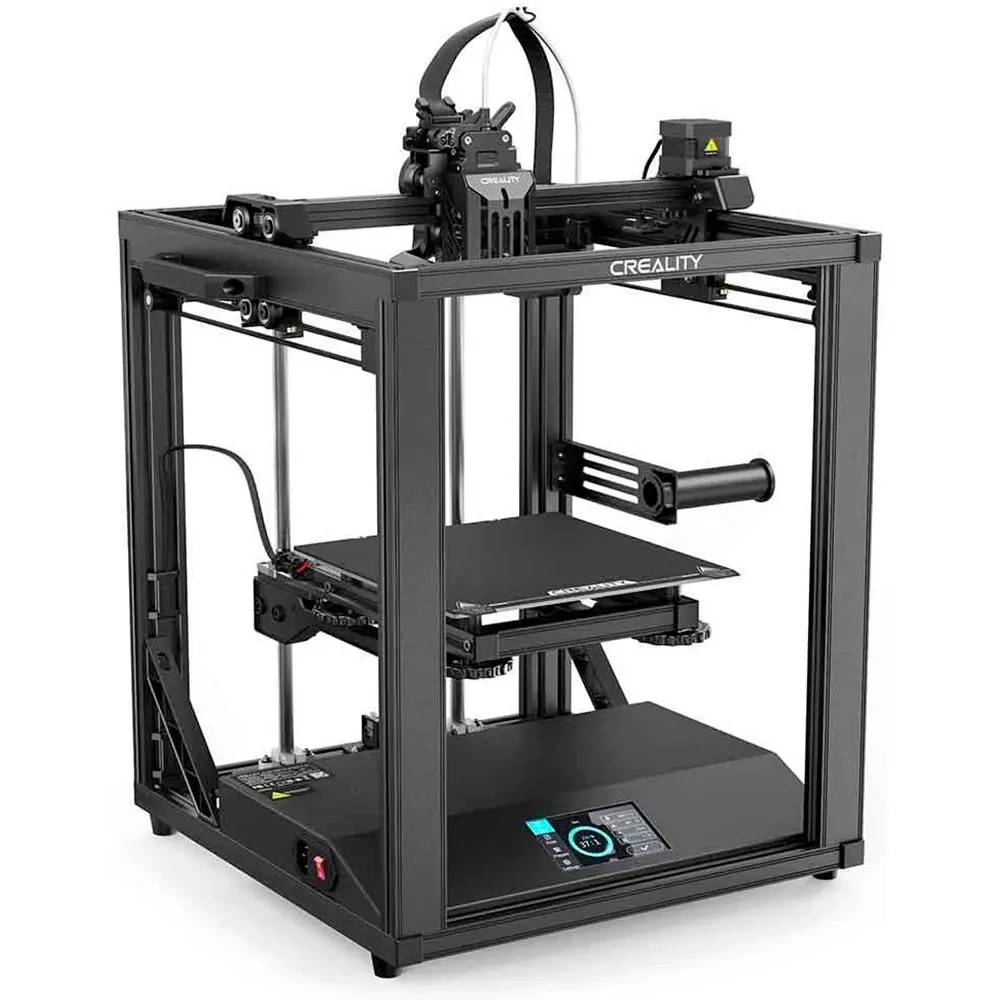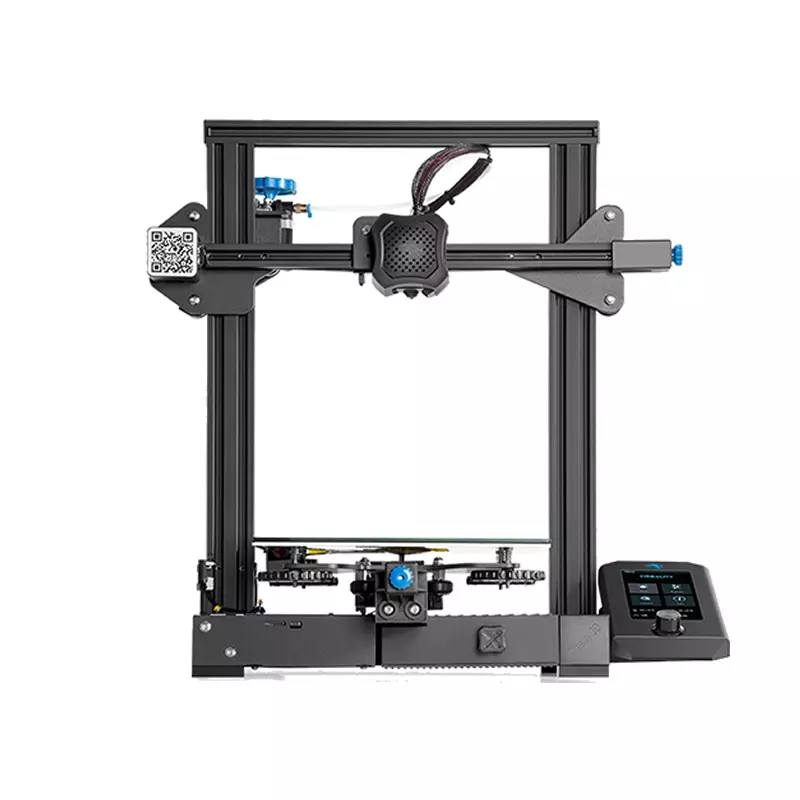Compare Ender 5 S1 vs Ender 3 V2
Comparison between the best 3D printers
Choose the best 3D printer at the best price. The cheapest 3D printers are here.
Buy a 3D printer here with 3D Fila.
 |
 |
|
| Model | Ender 5 S1 |
Ender 3 V2[BUY Ender 3 V2] |
| Printing Material | Filament | Filament |
| Buy Filament for Creality 3D Ender 5 S1 | Buy Filament forCreality 3D Ender 3 V2 | |
| Estimated price | $467,00 | $289,00 |
| Manufacturer | Creality 3D | Creality 3D |
| Release Year | 2022 | 2022 |
| Print Volume [mm] | 220x220x280 | 220x220x250 |
| Printer Size [mm] | 425x460x570 | 470x475x620 |
| Weight [kg] | 12,1 | 7,8 |
| Power Loss Recovery | YES | YES |
| Enclosed printer | NO | NO |
| Bed Leveling | Automatic | Manual |
| Filament End Sensor | YES | NO |
| Bed type | Heated | Heated |
| Power supply system | Direct Drive | Bowden |
| Standard nozzle | 0,4 | 0,4 |
| Maximum Nozzle Temperature [°C] | 300 | 255 |
| Maximum Bed Temperature [°C] | 110 | 100 |
| Maximum printing speed [mm/s] | 250 | 180 |
| Filament holder | YES | YES |
| Camera for supervision | NO | NO |
| Recommended filaments | PLA, ABS, PETG, TPU, PC, ASA, HIPS | PLA, TPU, ABS, PETG |
| Recommended slicers | Cura, Simplify, Slic3r, IdeaMaker | Cura, Simplify, Slic3r |
| Maximum Resolution [mm] | 0,05 | 0,1 |
| Processor | 32 Bits | 32 bits |
| Display | Display touchscreen 4,3 '' | Touchscreen TFT 4,3'' |
| Power Supply | 350 W | 24V / 360W |
| Connectivity | SD / USB / Wi-Fi | SD / USB |
| Operating systems | Windows, Mac, Linux | Windows, Mac, Linux |
| Date of registration in the system | 2023-10-04 | 2021-04-15 |
| Release date | 2022 | 2022 |
| Extra features | A steel drive shaft synchronizes the two Y-axis belts. High-torque 42-48 Y-axis motor for responsive and precise movement. Cartesian structure. Enhanced stability by thick linear shafts, extra stiffeners, two cantilevers, and silicone bumpers. Double Die Spring profile reinforcement. Silicone bed support. All-metal Sprite direct extruder. Best for printing with flexible filaments like TPU. Auto-calibration with 16-point CR Touch. Compatible with Sonic Pad, Wifi Box, and Camera kit. | The Creality Ender-3 V2, with a design inspired by the Prusa i3 series, stands out for its DIY assembly structure. With an area of ??250x250x250mm, it supports a variety of projects. It has a micro-USB port, microSD slot and integrated tool drawer. The tension adjustment adapts to different regions. Its manual print bed leveling process requires attention, but offers an enriching experience. Ideal for 3D printing enthusiasts willing to invest time in assembly and adjustment. |
| Support for multiple colors and materials (AMS and CFS) | NO | NO |
Notes * |
||
| Cost-benefit | 7 / 10 | 7 / 10 |
| Hardware | 2.4 / 10 | 1.8 / 10 |
| Tela | . | . |
| Print volume | 3 / 10 | 3 / 10 |
| Performance | 2 / 10 | 1 / 10 |
| [BUY Ender 3 V2] |
Conclusion |
| In conclusion, when comparing the Creality Ender 5 S1 and the Ender 3 V2, both 3D printers offer distinct advantages suitable for different types of users and applications. The Ender 5 S1 stands out with its superior features such as automatic bed leveling, a more advanced power loss recovery system, and a higher maximum nozzle temperature, allowing for a wider range of filament compatibility. It also boasts a maximum printing speed that's significantly faster than the Ender 3 V2, making it an excellent choice for those looking for efficiency and versatility in their prints. Additionally, the sturdier construction and direct drive system of the Ender 5 S1 facilitates better handling of flexible materials like TPU. On the other hand, the Ender 3 V2, while being the more budget-friendly option, also appeals to enthusiasts who enjoy the DIY assembly experience. Its straightforward design and manual bed leveling process may be more appealing to users who appreciate a hands-on approach to 3D printing. Although it has a slightly lower maximum temperature and printing speed than the Ender 5 S1, it remains capable of handling a variety of common filament types effectively. In terms of cost-performance, both models rank similarly, but the Ender 5 S1 justifies its higher price with advanced features and better overall specifications. Ultimately, the choice between the two depends on the user's budget, printing requirements, and preferred level of engagement with the machine. |

